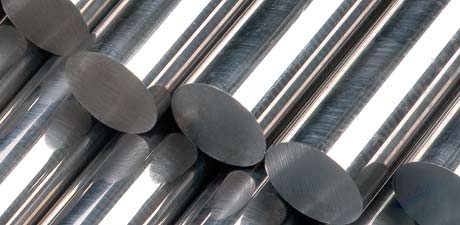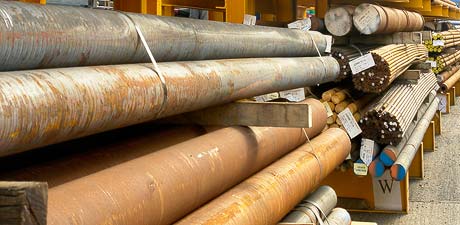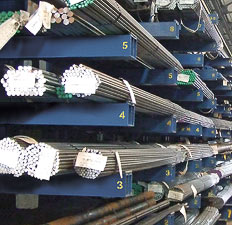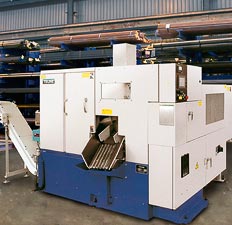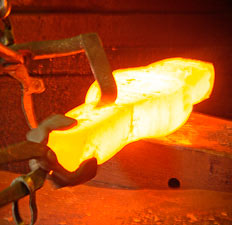Technical Data
Metallurgical Terms
Ferro Alloys.
A term used for alloys of iron with another metal such as chromium, manganese, silicon, tungsten, molybdenum or vanadium. These alloys are used as a means of introducing the alloying element into steel or cast iron, or as deoxidizers. Ferro alloys are produced by electric smelting or by reduction with aluminium, an exception being high carbon ferro manganese which is normally produced in blast furnaces.
Ferro Manganese.
The form in which manganese is generally used in the steel industry. The ordinary qualities contain 70 to 80% manganese and about 7% carbon. Spiegeleisen may contain from 12 to 30% manganese and about 5% carbon. These alloys are produced in small blast furnaces of standard type except that they are often fitted with special cooling devices, owing to the high temperatures involved in the reduction of manganese oxides. Low carbon ferro manganese is an electric furnace product and is available in several grades, of which the highest quality may contain as much as 90% manganese with a maximum carbon content of 0.07%.
Fettling.
The removal of adherent sand from castings by hammering, shot-blasting, tumbling or hydro blast.
Fibre.
(See Flow Lines).
Fibrous Fracture.
(See Fracture).
Fin.
(See Flash).
Firecracks.
(a) Cracks found, for example, on the surface of rolls of hot rolling mills, or metallic bodies which have been subjected to repeated heating and cooling.
(b) (Chill Cracks). Marks on the surface of a hot rolled product which appear periodically, having been produced by a crack or cracks on the surface of the roll.
Fish Scale Fracture.
A fracture showing coarse facets, found in tool steels which have been re-hardened without intermediate annealing.
Flakes.
(Hair Line Cracks, Snow Flakes). Fine internal fissures which may be found lying in various directions in the interior of steel. They occur most frequently in large alloy steel sections but may also be found in carbon steels. Flakes in the heads of rails are known as Shatter Cracks. They are caused by hydrogen in the steel and may be prevented by appropriate heat treatment or by casting in a vacuum.
Flaking.
(See Spalling).
Flame Hardening (Shorterizing).
A method for local hardening in which the steel is heated by a mechanically operated oxyacetylene blowpipe which traverses the object to be hardened at a predetermined rate. Quenching is often carried out by a jet of water which follows immediately behind and is likewise mechanically controlled. The hardened layer may vary in depth from a mere skin to 6m, according to the material being treated.
Flame Plating.
A surface hardening process in which hard particles projected at high velocity become bonded to a metal surface.
Flash (Fin).
(a) The metal that is in excess of that required to fill the final impression in a pair of forging dies and is exuded as a thin plate at the parting line between the dies.
(b) A thin fin of metal formed at the mould joint parting in a casting due to the cope and drag not matching properly.
(c) In pressure welding, the metal squeezed out of a join made by the resistance-welding process.
Flow Forming.
An operation similar to spinning in which the deformation of the blank is done automatically under hydraulic pressure.
- < Previous
- 1
- 2
- 3
- Next >


